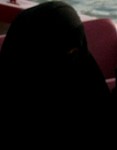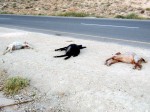“To Live and Love in Palestine” is a literary, musical and cultural evening which will take place on May 7 2010 in the Odeon in Vienna. The event is organized by Society for Austro-Arab Relations headed by Mr. Fritz Edlinger. Dr. Sahar Khalifeh, a famous Palestinian writer and novelist will take part in the event next to the famous Austrian actor of theater and television, and film director Karl-Heinz Hackl, who will read part of his book in German. Musician Marwan Abdo will perform typical Arab music at the event. At the end of the evening, a dialogue between Khalifeh and Viola Raheb will be featured.
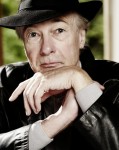
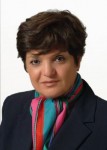
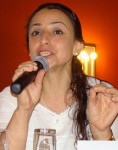
Marwan Abdo, born 1967 in Beirut, Lebanon, is a Palestinian refugee. As a child 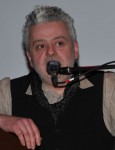 he experiences the fate of living the Diaspora. In 1985 moved to Austria to continue his studies, In Vienna he finds a new home as musician, singer, composer and poet Abdo´s instrument, the Oud (the oriental, short-necked lute), is for the Arabian music nearly of the same importance as the piano in the Western culture, his music has its roots in the classical Arabic music which is not restricted to particular rhythms. (Read More about Marwan Abdo). (Click on pictures to see them bigger).
he experiences the fate of living the Diaspora. In 1985 moved to Austria to continue his studies, In Vienna he finds a new home as musician, singer, composer and poet Abdo´s instrument, the Oud (the oriental, short-necked lute), is for the Arabian music nearly of the same importance as the piano in the Western culture, his music has its roots in the classical Arabic music which is not restricted to particular rhythms. (Read More about Marwan Abdo). (Click on pictures to see them bigger).
Sahar Khalifeh is a Palestinian writer and novelist born in 1942 in the occupied city of Nablus in the West Bank. She received a BA in English and American Literature from Bir Zeit University in 1977, a Diploma in Creative Writing from the University of Iowa, 1978, a MA in English and American Literature from the University of North Carolina – Chapel Hill, USA in 1982. She received a Ph.D. in Women Studies & ِAmerican Women’s Literature from the University of Iowa, USA in 1988.
Sahar Khalifeh wrote the famous novels “We Are No More Your Slave Girls”, “Wild Thorns”, “Sunflower”, “Memoirs of an Unrealistic Woman”, “Al Saha”, “The Inheritance”, “The Picture, the Icon, and the Covenant”, “Hot Spring, Roots and Branches”, “The Door of the Courtyard”
On May 5 2010 Sahar Khalifeh will hold a lecture in St. Poelten. The theme of her speech will be “Caught between Western Prejudices and Islamic Fundamentalists”. The text of her speech follows below. The text was sent to me by Mr. Fritz Edlinger of SAAR, who organized this cultural event and also other activities of Sahar Khalifeh.
Caught Between Western Prejudices and Islamic Fundamentalists – By Sahar Khalifeh
Before delving into the core of my presentation in which I explain how we Palestinians, we Arabs, We Arab women are caught up between Western Prejudices and Islamic Fundamentalists, allow me first to introduce myself. I am a Palestinian, I am an Arab, and I am a Moslem. In short, I am a Moslem Palestinian Arab woman. This means, according to the Western media and Western traditional prejudices, that I am a dangerous creature who belongs to a dangerous culture that has a fixed nature, unable to be converted, unable to change. According to those prejudices, we Moslem Arabs are fixed in one static reality, in one static phase. A Palestinian is a synonym to a terrorist; an Arab is a synonym to a filthy, greasy sheikh with a beard and beads, a camel in the background and a dagger behind his back. We are reduced to a picture that does not change in time or seen under a different light: A Moslem Ben Laden, a Moslem fundamentalist, a Moslem terrorist, a Moslem wrapped up woman, a Moslem filthy oil- sheikh. We are fixed in one reality, one image, one picture which is considered real and true.
But, is there an image, which is real and true? Is there a reality that is fixed in nature, which is unmovable and unable to change? Let us remember the findings of the great impressionist artist Cezanne, who used to study the effect of changing light on the same landscape or view. What he found out is that the same landscape, or view, under different light produces different pictures. He also found out that we see the same view differently through our 2 different eyes. I mean the right eye and the left eye do not see the same view the same way because each eye sees the view from a different angle! So, if a pair of eyes of the same person see the same view differently, can we infer then that the same view cannot but be seen differently by 2 different people? Can we also infer that not only light or different eyes make things look different, also different times, different imaginations, emotions, prejudices and pre-conditioned concepts can have the same impact on vision and sight?
Let me show you from real examples, from down-to-earth experiences that things cannot be static and people can never be fixed in one reality, in one static phase.
I started by saying that I am an Arab woman, assuming that an Arab woman is a fixed reality or an unchanging identity that is clear and complete. It sounds as if I assume that an Arab woman is a being, or a creature, or a substance that is seen or comprehended the same way by all. But, as we all know, a woman in the Arab culture, and many other cultures, means the weak sex, the other sex, the unequal sex, the sex that does not inherit the legacy or perpetuate the family’s name, the sex that can bring children as much as it can bring dreadful shame. Within the family where I was borne, I was received with disappointment that reached sobs and tears. Everybody was waiting for a boy. To their dismay, I was a girl. I was the fifth girl in a raw, which meant that I was the fifth disappointment, or what my mother considered her fifth defeat. Compared to my uncle’s wife who victoriously produced 10 precious boys, my mother was a loser, an unblessed wife. My uncle used to tease his brother, my father, by saying: “Don’t worry brother, my sons will carry my name and yours! My mother was more beautiful, more intelligent and more dignified than my uncle’s wife and all other wives in the family. Nevertheless, every one looked at her as the least productive, with no valuable fruits.
I inherited those prejudices and concepts. Since childhood I repeatedly heard them say that we girls of the family, girls of the neighborhood, and all girls of the world were powerless, helpless, a sex doomed by nature, the sex that is permanently weak. Thus, as far as I can remember, I started my fight with nature since I was a child.
As a child, they considered me rebellious, over dynamic, very loud and fussy and uneasy to cope with. I wanted to prove that despite my doomed nature, I was good and worthy, bright and clever, cute and funny. I could make people giggle with laughter and fill them with joy. I wanted to prove that I was important as my adored brother – the only boy among six girls – and that I deserved the same importance and love. Of course, I failed. For years, I failed. People continued saying: women are weak, women are worthless, and women are nameless. They do not inherit the legacy or perpetuate the family’s name.
To my surprise, and I hope to yours, a few months ago, my younger sister told me that she accidentally discovered that I was the only member within the Khalifeh family, which is as large as a tribe, whose name was listed in the Palestinian encyclopedia. With a sigh of relief, she added: “Not my father, not my brother, not my uncle with his 10 precious boys, not any male in the family was mentioned in our encyclopedia, it was only you!” I also sighed with relief and told her: “My dear sister, you have to notice that many women are also listed in the Egyptian encyclopedia, the Syrian encyclopedia, the Lebanese encyclopedia, the Algerian, the Moroccan and the rest of Arab encyclopedias? Things are changing. Things have changed!
When I say that things change I mean that things are not static. Things are moving. Things are apt to change. For me as an Arab woman, I passed different phases, I was transformed by currents, and I was a transmitter of change. Even among the most conservative Arab families, women now go to school. When they earn education, they become teachers, doctors, engineers, pharmacists, writers and journalists, musicians and artists. Many women are now considered indispensable, stronger than men, more creative than men and more important than men. Things have changed.
But mind you. When I see our image in the Western media as dreadful creatures wrapped up in their chadors, with masques of leather, harems behind their veils, I ask with amazement: “Why do they see us fixed in one reality, in one static phase?! They draw us a picture that is constantly gloomy, seen through one single light! Is this what they consider a true picture? Do they think that God has created us differently than the rest of the female sex, unable to change?!”
Now let me tell you the story of how I was introduced to a reality that does not believe in a static reality. How I discovered that what people in a certain culture consider true is not the Truth because things are not fixed or static, because things keep moving , keep changing in essence and shape.
When I was still a child, I had a teacher who constantly mentioned the word Change in different tones and meanings. He mentioned the word Change when he spoke about social justice. He mentioned Change when he spoke about a fair distribution of Arab wealth. He mentioned Change when he spoke about Arab women’s status and he mentioned Change when he spoke about Arab out-of-date regimes. Everyone I new respected and admired that teacher. The young ones wanted to be like him, the old ones were keen to hide him when the police chased him.
When I became a teenager, I discovered that my great teacher was not the only one who spoke about Change and justice. Most of our educated people believed in and spoke for those beliefs and thoughts. I also discovered that thousands of our enlightened men, similar to my teacher, were either chased by the police or rotting in jails of regimes supported and nourished by Western powers: British, French, and later on the Americans.
Until the mid sixties, the national and international policies of our great nationalist leader: Abdul Nasser encouraged that mood for liberation and change. His influence was so great that a number of successful codetta took place in different Arab states. The West considered him a threat to Western interests and their reactionary allies in the region, but we thought we were witnessing the beginning of real good change.
The fifties and sixties were the golden era of Arab nationalism. The Arab street was full of vigor and hope for transformation. Our attitude towards our traditional socio-political systems was rebellious and sharply critical. We reflected our themes of liberation and social justice in our literature, our theater, our songs, music, and the idioms we used in our daily life. Literature from all over the world was pouring into our culture. In our bookshops and on street pavements you could find existentialist literature, socialist literature, black literature and every literature that called for liberation, revolution and change.
That mood for liberation and change influenced everyone including the illiterate peasants. Women too were touched. They started to go out in the street without their veils. Tens of thousands of young women graduated from universities. Some of them started to get involved in politics and enrolled in political parties. Women not only took their veils off, they also wore the sleeveless and mini skirts. We were dancing tango and Rock and Roll, listening to Western songs and music despite our hatred to the West. We wanted to be like the West but not under its domination or control.
That entire dream-like atmosphere came to a halt when Israel, backed by the West, defeated Nasser in 1967. That defeat represented the defeat of our national movement and our socialist beliefs. The Americans and their conservative allies in the region took that opportunity. They forcefully supported the move away from our leftist nationalism by backing the Islamists. They poured millions of dollars in that direction. The Moslem Brothers’ party, which was completely ignored by the masses started to gain power. What happened in our region in the seventies and eighties was very much similar to what happened in Afghanistan when the Americans supported the Islamists, including Ben Laden, to bring down the left. A similar scenario, almost the same, took place in our region. Surprisingly, to America’s dismay, the Islamists turned their back against their supporters once they took hold of the street. They became a crystallized power. They no longer needed America. After being pampered and nourished by America, America started calling them “terrorists,” and Europe followed the American style. That was the time when we started witnessing the birth of a new era which we ironically defined as change, but what kind of change!
In Palestine, the Israelis copied the American model. They encouraged the Islamists to stand in the face of the nationalist-socialist PLO. While they were chasing, harassing and assassinating PLO leaders and activists, they pretended not to see what the Islamists were doing to women and society at large. They even favored them in educational positions. They infiltrated thousands of them, men and women, in our educational system. Thus, the Islamists gained more power through influencing students at an early age. Once they were sure of their grip, they turned their forces against the West and Israel. They became a crystallized power. What helped them reach that stage was not just the nationalist – socialist defeat deepened by the downfall of the Soviet Block. Nor was it the early American- Israeli support. The mal-administration of many corrupt leaders of the PLO added to their success.
Historically, after the defeat of 1967, the PLO filled the gap created by Nasser’s absence. Arab revolutionists clustered around the PLO hoping to bring change to the entire region. During the seventies and eighties, the PLO represented the force that could bring socio-political change and unity against our conservative regimes. Unfortunately, by time, the PLO itself became not much different from other conservative, corrupt Arab regimes. The PLO leaders were either affected by the Arab petro-dollar or lost track and vision by losing a great number of their distinguished intellectuals that were assassinated by the Israeli Mossad. Those who made the Oslo agreement were certainly not the brightest. They failed as administrators as much as they failed in bringing peace. Their corruption added to people’s poverty, and the Israelis made it impossible for them to bring stability and hope. People started to be fed up and bitter. Writers, journalists, artists and intellectuals were writing, calling, begging for change, with no avail. The masses, beaten by poverty, lack of vision and hope turned to the Islamists. They meant to bring to power a front that could rid them of poverty, corruption and occupation. This is how Hamas won the elections in Palestine. This is how Hamas took over Gaza. This is how the Arab masses are turning towards the Islamists to rid them of poverty, and defeat.
We are now in a mess. Israel is taking advantage of this mess. Beside the continuation of occupation and the building up of new settlements, thousands of settlements that leave us no space to breath, every year, or every other year Israel launches a new operation or war similar to the one you saw on TV taking place in Gaza. They shell; they rocket, they kill and destroy. They destroy the infrastructure of towns and villages. They destroy electricity plants, water systems, sewage systems, hospitals, homes, buildings, and refugee camps. They destroy UN and NGO offices, storage places of wheat and flour, milk and sugar, gasoline stations, cars, buses and even ambulances. They wound and kill hundreds, at times thousands of Innocent civilians, including women and children.
As you might see, I told you my story as a woman, as a Palestinian, and as an Arab. I told you those stories from my perspective, from my experiences, and from my beliefs, which I consider real and true. But for you as Westerners, from what you have learnt or came to believe, you might have different thoughts, beliefs or visions about all what I have mentioned, right? This is normal and understandable. You know why? Because we too as Arabs, as Palestinians and as Arab women have different beliefs and visions about your culture, about your history and about your behaviors. But what we see, and what you see, is it true and real? Is it the Truth? We have to raise these question unless we are satisfied with our prejudices and fixed in our traditional beliefs.
To wrap up, let me remind you of Cezanne’s discovery about the connection between light and sight. How a scene or a view looks differently under a different light. In this context, allow me to revise the different cultural prejudices seen differently under different lights.
First prejudiced image: I examined women’s nature as seen through the eyes of a traditional society that considers women unchangeable, permanently helpless, and unable to inherit their families’ legacies or perpetuate their families’ names. How can I define that image, true or false? Please answer, true or false? False.
Second prejudiced image: I examined Arab women’s image as presented in Western media. That image assumes that Arab women are harems trapped in their veils as much as they are trapped in time. They are permanently helpless, frozen in one static phase. That image ignores women like me; ignores the presence of thousands like me that fight against sexism, racism, colonization and occupation. That image ignores the presence of millions of younger women that fight for education, light and liberty. They fight against the prejudices of the East and those of the West. They fight to be able to inherit their families’ legacies and perpetuate their families’ names. A number of them will ultimately succeed, as I did, in printing their names in Arabic encyclopedias and leaving their marks in our modern history. The one-sided image about Arab women, presented in the West, how can I define it, true or false? Please answer, true or false? False.
Third prejudiced image: Western media presents Moslems as fundamentalists, Moslems as terrorists, Moslems as Ben Ladens, thousands of Ben Ladens hidden in every corner of the Middle East. Arabs have one static nature that produces violence, one-track mindedness, one-track social structure that ultimately gives birth to corruption and reactionary backward regimes. Western media forgets to mention that historically, the West has supported reactionary backward regimes against the will of their people to protect Western interests. Western media forgets to mention that historically, Western powers had helped the Islamic fundamentalists to have power and control in our region, just like what happened in Afghanistan. That image about Arabs as having one reality, trapped in one static phase, how can we define it, true or false? Please answer, true or false? False.
The final image is about Israel. Israel is the only enlightened, secular democracy in the Middle East. Israel is not racist. Israel is not sexist. Israel is not religionist that discriminates against other religions and creeds. Israel is a permanent ally that protects Western interests in the Middle East. Villains, powerful villains, very well armed villains, that are full of hatred, that are full of grudge, ready to kill and ruin, surround innocent Israel. Those villains do not listen to reason or common sense, do not obey international law, ignore UN resolutions, kill and destroy with highly organized force, on their way to develop nuclear weapons and phosphorus bombs. How can I define that image? Is it true? Is it real? Is it reality? I will not answer this question; I leave it to you to think about.
Now I would like to examine the concept of “freedom of expression.” In the West, or in the First World, as we call it, they assume that suppression in the Third World or in Arab countries makes it difficult, or even impossible to say the Truth. But, my dear friends, with all the freedom of expression you have in the West, I just showed you that you receive images that look differently through different eyes affected by different lights! Where is the Truth in what you see? Where is the Truth in what we all see? In the West, there is a tendency to put all Palestinians, all Arabs, and all Arab women in one static image, in one static phase. We too in the Arab world, and perhaps in other Third World cultures, we see the West as whole as one entity, one identity and one frozen face.
Not only the media that tends to show things differently or draw twisted conclusions or put all images in one single frame. Also religion, politics, race, sex and interests, all these can twist images and play a role in forming impressions and framing minds. From my place in the Middle East, with my identity as a Palestinian, as an Arab, as a Moslem woman, how dare I talk about the Truth? Can any one here tell me if we ever can reach the Truth?
Where did I reach with my rambling thoughts and scattered images? That there is no Truth to believe in or work for? That we are all victims of prejudiced cultures. This is really absurd! It is unfair and depressing. For we human beings, despite our difference, our fences and our limited spheres and visions we all share one Truth that is absolutely true and worthy, that is bright and hopeful, that is worth living for and dying for. It is the Truth that is based on love and liberty. Love for all and liberty for all. And again, despite our differences of race, religion, sex and politics, we all need love, we all need warmth, we all need intimacy. We all need to be recognized as humans, sensitive humans, tender humans and capable humans. We all need to communicate our thoughts and feelings. We all need to hold and embrace. Since childhood until we become very old, we need to love and be loved. We search for love, we cry for love, and at times, we die for love. We break into pieces when we lose love or feel betrayed by love. Is there a truth beyond this truth, more real, more genuine, and more precious and worthy?
And liberty. Is there a human being who does not seek liberty or spends a whole life searching for liberty? We call it liberty that leads to freedom, freedom of the body, freedom of the soul, freedom of the heart, freedom of the mind and freedom of speech. So there is a Truth I believe in despite my suspicions and critical mind. Deep in my heart, I believe that people deserve love, love and liberty that make them whole, fill them with light.
Did you believe me when I started my talk saying that there is no Truth that is eternally fixed? Did you believe me? Well, that wasn’t true, it was a trick, a game, or what we call in literature, a technique. All what I meant is to draw your attention, to shake some prejudices and shed different colors on different lights and sights. I hope you forgive me, I hope you recognize me, I hope you love me despite differences of color and light, vision and sight.
لاغ by Kawther Salam
Possibly related posts (automatically generated):
- The Former Leader of Gaza Death Squads Mohammed Dahlan, who deceived the Europeans and the Americans, who financed his defeated army of death squads, the army that...
- Over 13 Honor Killings in Two Months in Palestine Seven women were killed in the Palestinian territories because of “honor killings” in the first month of the year 2010....
 1967, in order to control the occupied Palestinian population, Israel has enacted more than 1,200 military orders and has altered the administrative and legal situation in the Occupied Palestinian Territories in violation of international humanitarian law. Other parts of the occupied West Bank, including East Jerusalem, were annexed by Israel immediately after the 1967 war and colonisation of the occupied city is ongoing in violation of international law. Its military regime has in effect legalised the illegal.
1967, in order to control the occupied Palestinian population, Israel has enacted more than 1,200 military orders and has altered the administrative and legal situation in the Occupied Palestinian Territories in violation of international humanitarian law. Other parts of the occupied West Bank, including East Jerusalem, were annexed by Israel immediately after the 1967 war and colonisation of the occupied city is ongoing in violation of international law. Its military regime has in effect legalised the illegal.














